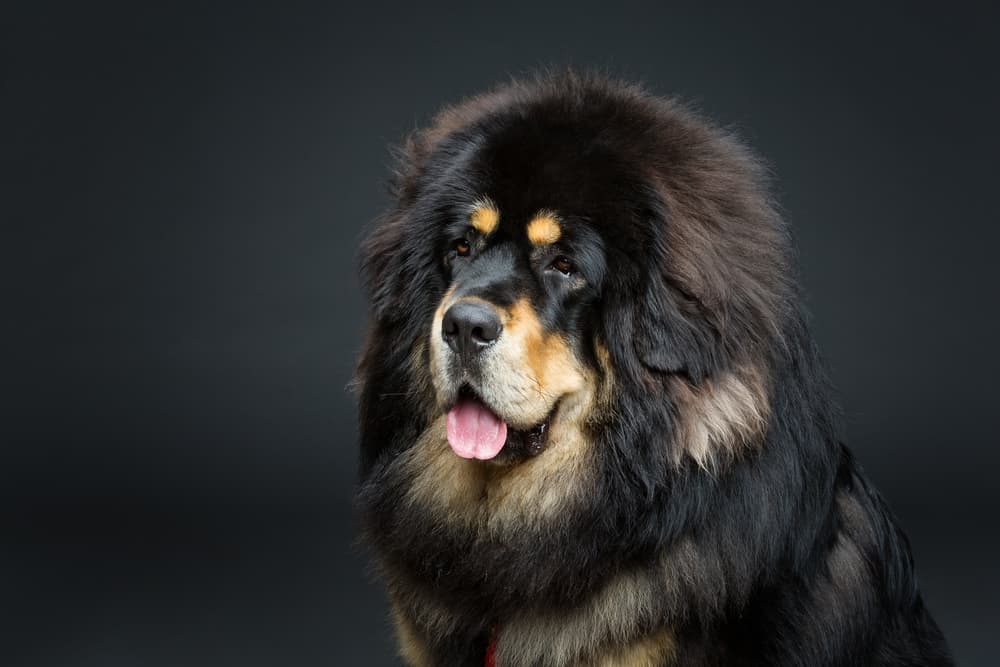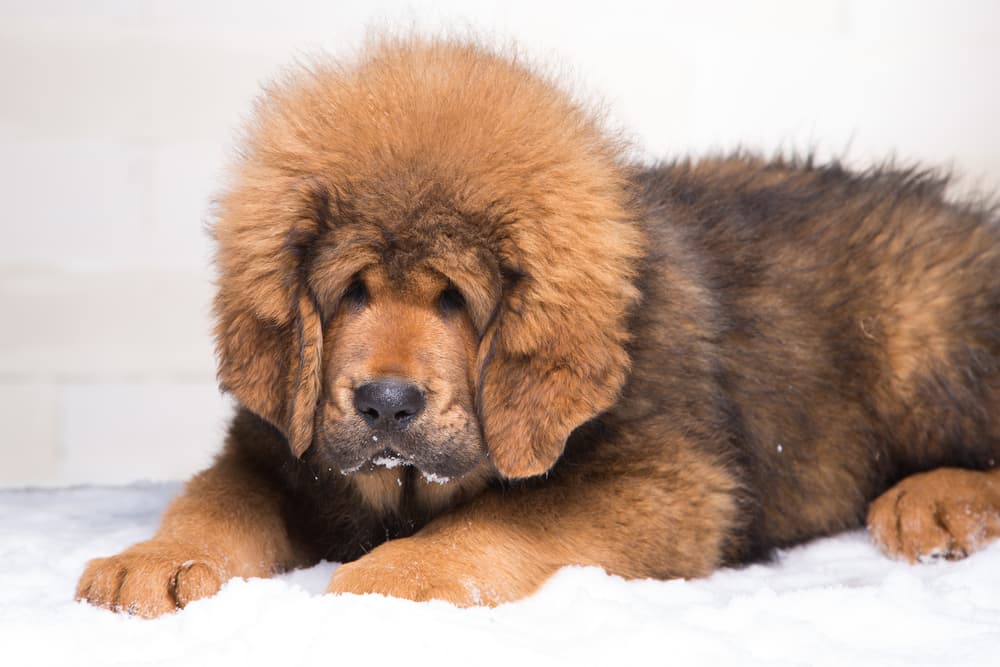Tibetan Mastiffs have made several appearances in movies, books, television, and the news for being incredibly expensive. A high-rolling Chinese businessman once shelled out $1.9 million for a 1-year-old pup that was rumored to have some lion’s blood.

Tibetan Mastiff
Watchful, protective, intimidating yet loving, gentle, and loyal – the Tibetan Mastiff reigns supreme among guard dogs because of their temperament, impressive size, and appearance.
Country of Origin
Tibet
Breed Group
Working dogs
Height
Male 24-26 In
Female 22-24 In
Weight
Male 90-150 Ib
Female 70-120 Ib
Life Span
10-12 years
In a Nutshell
Originally bred in the Himalayan Mountains, the ancient Tibetan Mastiff is a working dog originally created to guard livestock and property. They’re hard-working dogs that thrive on large farms with plenty of work to do but they can also enjoy life as family companions. Even though they’re territorial with strangers, this reservation and aloofness doesn’t extend to family members. Tibetan Mastiffs are calm, sweet, and fiercely protective of their loved ones. All in all, Tibetan Mastiffs can make great pets but do require lots of training.
Life With a Tibetan Mastiff
Looks & Personality

Tibetan Mastiffs are large, powerfully built, well-boned, and muscled. While they are large and heavy dogs they are also always very agile and athletic. They have a double coat: a long, thick, coarse-textured top coat and a heavy but soft and woolly undercoat. Their coat is surprisingly low maintenance and comes in a wide variety of colors. The breed’s mane and large head provide a noble, dignified look that’s always impressive.
Tibetan Mastiffs are very fast compared to other large dogs. They’re even great climbers, so you’ll need a tall fence to keep them from exploring the neighborhood. Additionally, Tibetan dogs aren’t really meant for apartment living – they benefit from large spaces with a yard.
Despite their massive size and intimidating aura, Tibetan Mastiffs tend to be big softies when it comes to their human families. These pups are highly intelligent and independent yet sensitive to human moods. Nothing will escape their attention as they carefully and quietly guard their family. And although they’re independent, the Tibetan Mastiff should not be left to live outside. They’re companion dogs that need to be in the presence of human beings to be happy. Tibetan Mastiffs are full of personality, and you’ll love them for it.
A tip from a vet
A tip from a trainer
What about your Tibetan Mastiff?
Did You Know

Tibetan Mastiffs don’t shed all year long. Instead, they blow their coats in one big shedding each year.

They’re a slow-maturing breed, which is expected for giant animals, taking about 4-7 years to physically mature.

They have a special affinity for chasing, catching, and killing birds, so it pays to be extra careful while walking them in a park or area with lots of birds.
In The News
Famous Tibetan Mastiff Owners
The History Behind the Breed
The Tibetan Mastiff breed originated in the Himalayan Mountains of Tibet and probably as early as 1100 BC, where it traveled with nomadic herdsmen and served as the protector of villages and monasteries. As such, they thrive where most dogs and people can’t: in thin frigid, mountain air. It’s the largest of the Tibetan breeds and regarded by most as one of the world’s most ancient breeds.
The dogs were often tied up as puppies to enhance aggressive tendencies. It was not until they made their way to England in the mid-1800s that these pups came out of isolation.
It’s important to note that the Tibetan Mastiff hasn’t changed much since the ancient days. They were bred for hundreds of years to be suspicious of absolutely everything but their family. Socialization is, therefore, necessary for this breed.
If a Tibetan Mastiff Could Talk…
A Quick Anatomy Lesson


The Tibetan Mastiff tends to be a healthy breed because it hasn't undergone much change since the ancient days. Still, like most large breeds, they are prone to dysplasia and thyroid problems. They're also prone to eye and ear problems, necessitating a visit to the vet for a checkup once a year. Even though the condition is rare, some Tibetan Mastiffs can develop a genetic condition called Canine Inherited Demyelinative Neuropathy (CIDN), which is fatal. Pups with CIDN often don’t live past 4 months of age.
Common Health Problems
What about your Tibetan Mastiff?
















